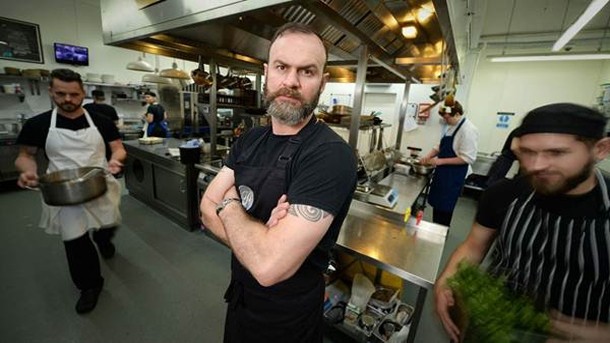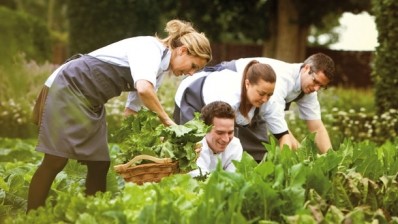Restaurants struggle with sustainability standards

A survey of 150 restaurant owners, managers and chefs found that while 80 per cent considered sustainability when making business decisions, 75 per cent felt they lacked the tools and knowledge to make changes.
E.ON estimates that energy savings of up to 25 per cent could be achievable in most restaurants, which could save the industry up to £325m.
Michelin chef Glynn Purnell – who recently cut energy usage at his Birmingham restaurant Purnell’s by a quarter – is working with E.ON to raise awareness of the issue.
Purnell said: “You wouldn’t throw food or money away so why would you throw away energy? That’s exactly what you’re doing if you leave things on.
“Running a restaurant is quite tight when it comes to making a profit so energy efficiency is obviously really important."
Purnell explained that using LED light bulbs and switching from gas to electric stoves had made a 'massive difference' in saving energy at his restaurant.
"I would never compromise the quality of food for the cost of energy or any other ingredients but everyone wins when you can find a way to let them work together," he said.
E.ON's research also revealed that while restaurant owners, managers and chefs estimated that only 25 per cent of customers cared about sustainability when choosing a restaurant, the actual figure was as high as four in ten.
Iain Walker, head of SME at E.ON, said: “The restaurant business is incredibly energy intensive and the desire to cut energy use is clear. The industry clearly understands the impact of energy efficiency on the bottom line, but our survey suggests there is a real need for greater awareness and help when it comes to how to tackle that.”
Glynn Purnell’s Top 10 Energy Saving TipsPurnell said: "I have to admit when setting up the restaurant we had a million things to think about and energy efficiency wasn’t one of them. When you look back you realise how much money you could have saved if you had put in these measures at the start. I opened my first restaurant 12 or 13 years ago but if I were to open another I’d make sure energy efficiency was one of the top priorities."
1. When investing in new equipment, don’t just think of the upfront cost, think in terms of the lifespan of a use including factors such as preheat energy consumption, idle energy rate usage, production capacity, operating hours and maintenance and disposal costs.
2. Retrofit old equipment with high efficiency parts and accessories. Consider installing control technology, which automatically switches off or turns down unused cooking equipment. Automatic pan sensors are available for gas and electric hobs, which turn the hob off or down. Install a door closer on refrigerators, hang strip curtains on coolers to maintain moisture levels or use programmable thermostats to automatically adjust ventilation and air conditioning.
3. Consult an energy consultant or a commercial kitchen designer and installation team.
4. Locating refrigerators and freezers away from the hot kitchen will work far more efficiently and use less energy, and it will reduce unwanted heat gain in the kitchen. Install door closers or alarms to prevent employees from accidentally leaving fridge/freezer doors open. At Purnell’s, we also use a refrigerator that was made for tropical climates and so is adapted to allow as little temperature change as possible.
5. Use energy efficient lightbulbs or LEDs. We changed all our lights in Purnell’s from gallery lighting to LEDs which made a massive difference to our bills and even improved the ambience of the restaurant (contrary to popular belief!)
6. Don’t keep frozen foods at temperatures colder than needed - increase the temperature of frozen food and product stores from -25°C to -20°C and save 10 per cent of the refrigeration energy.
7. An induction hob is up to 50% more efficient than a traditional electric hob and can power up quickly, reducing the need for them to be on all the time. They generate less heat which means less cooling in the cooking areas is needed. Consider switching from gas permanently and make the change to induction when you do. They are also easier to clean, which can save extra money and time!
8. A combi oven, which offers convection, steam and combination cooking, can reduce energy costs by around 50 per cent because they offer faster cooking times.
9. Pass-through dishwashers are the energy-hogging workhorses of many professional kitchens but the new generation has lots of energy-saving features. Choose a dishwasher model with a heat recovery condenser device to reuse waste hot water to heat the incoming supply of water.
10. New grill designs can detect something placed underneath them and heat up in seconds. Good designs will respond in less than ten seconds, offering energy savings of 75 per cent.

































